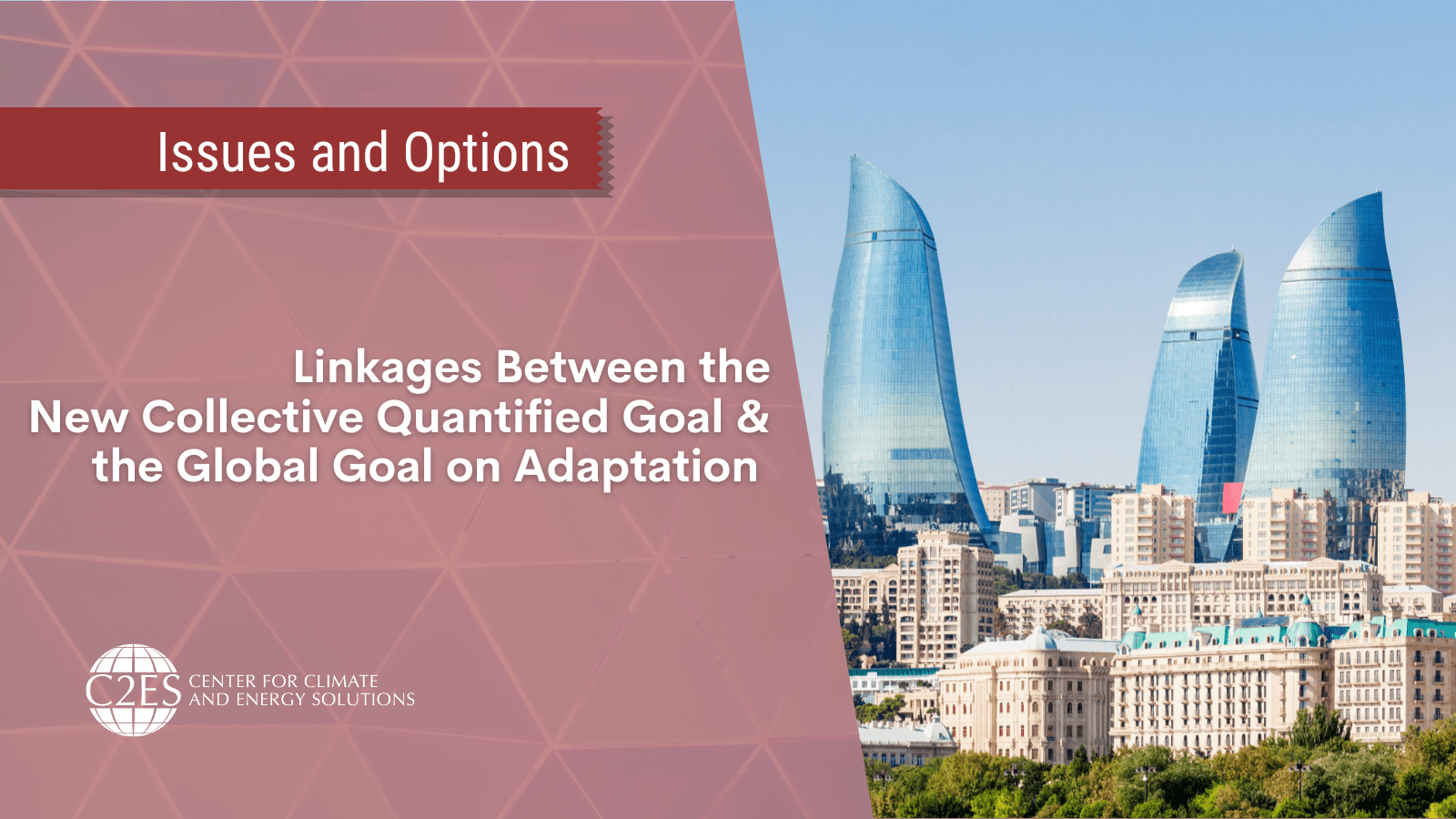Connections Between the New Collective Quantified Goal and the Global Adaptation Goal: Challenges and Opportunities

At the recently convened 29th Conference of the Parties (COP29) to the United Nations Framework Convention on Climate Change (UNFCCC), an ambitious agenda awaits the global participants. Key among the pressing matters is the establishment of a new Collective Quantified Goal (NCQG) on climate finance—an endeavor that will shape the future of global climate initiatives. As these discussions unfold, it becomes imperative for the member nations to not only set this new climate finance goal but also to enhance synergies with other interconnected workstreams of the UNFCCC. The effective accomplishment of the NCQG is predicated on these collaborations, which require thoughtful engagement from all Parties involved.
The significance of climate finance cannot be overstated, particularly in facilitating global compliance with climate change objectives. With rising temperatures and increasingly erratic weather patterns posing existential threats, especially to vulnerable countries, sufficient funding for mitigation and adaptation strategies has become an urgent priority. In particular, it is essential for Parties to analyze how the NCQG interrelates with the Global Goal on Adaptation (GGA). This involves identifying specific elements concerning adaptation that must be foregrounded in discussions, notably referencing the United Arab Emirates’ Framework for Global Climate Resilience (the UAE Framework), a pivotal agreement established at the previous COP28.
Developing nations have long advocated for a “balanced allocation” of financial resources between adaptation and mitigation efforts. Despite these calls, the disparity between adaptation and mitigation funding remains pronounced. Historical investments in climate mitigation—efforts aimed at curtailing greenhouse gas emissions—have eclipsed those directed toward adaptation strategies, which are equally essential. Adaptation financing encompasses measures that enhance resilience to climate impacts, such as improving infrastructure, safeguarding natural ecosystems, and bolstering agricultural practices against climate variability.
As discussions progress at COP29, several countries have proposed the inclusion of an adaptation-specific thematic subgoal within the NCQG framework. However, securing consensus on this proposal has proven a formidable challenge, as it lacks the broad-based support necessary to get traction among all Parties involved. Yet, despite this hurdle, the necessity of prioritizing adaptation finance cannot be overstated. Without adequate funding for adaptation efforts, nations at greatest risk from climate change may find themselves grappling with overwhelming consequences, from flooding and droughts to socio-economic instability.
The COP29 meeting also highlights the broader need for enhanced international cooperation and robust financial commitments. The language of the negotiations suggests an acknowledgment that successful climate action will not merely depend on setting lofty goals but will require tangible, immediate financial backing. This will entail a re-evaluation of existing funding mechanisms and a collective commitment to fortify climate finance allocations while addressing the need for both adaptation and mitigation.
The ongoing discourse surrounding climate finance, particularly at a pivotal event such as COP29, reflects a growing recognition of the importance of comprehensive climate strategies. These strategies must be inclusive, ensuring that the voices of developing nations are not only heard but integrated into the fabric of global climate planning and financing efforts. Marginalized communities, often the most affected by climate change, need to be empowered through international frameworks that support equitable and sustainable adaptation measures.
In conclusion, the forthcoming deliberations at COP29 not only present an opportunity to establish a new NCQG on climate finance but also provoke critical questions about the future trajectory of global climate action. As climate change intensifies, collective and proactive measures are paramount. Achieving a balanced approach to both mitigation and adaptation finance that reflects the realities of vulnerabilities faced by developing nations will be an essential topic of discussion in the coming days. The outcome of these negotiations will resonate far beyond the conference hall, potentially shaping the fate of millions in the years to come.
Tags: #ClimateChange, #EconomyNews, #UAE, #COP29, #GlobalGoals




.jpg?w=768&resize=768,0&ssl=1)
